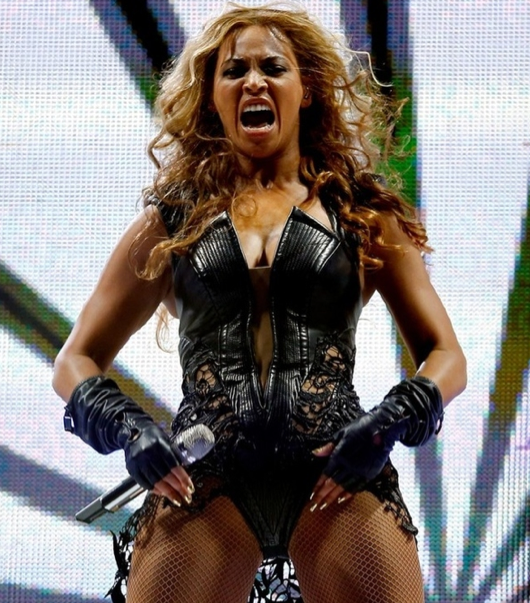
Image Credit: screenshot from Buzzfeed.com
Beyonce's publicist has created quite a media stir about photographs taken of the star's Super Bowl performance. On Tuesday this person apparently requested that Buzzfeed remove several "unflattering" images from the "33 Fiercest Moments from Beyonce's Halftime Show" gallery. The request was fruitless, considering the photos are still up; but it may have served a hidden purpose in igniting a flurry of posts, like Huffington's, that deny Beyonce has ever taken an unflattering photo. As the title suggests, Buzzfeed's controversial story adopts a playful, celebratory tone rather than a critical or parodic one. Its string of increasingly intense photos and enthusiastic captions create a mounting sense of the star's "ferocity," culminating in her mock deification ("Beysus knelt down to bless the audience") and popular coronation ("basically every moment was fierce...Because she's Queen B"). So why would anyone view this as bad publicity?
My hunch is that the publicist does not actually view the photos as damaging, but rather, understands the popular fascination with that which is deemed "unflattering." Labeling the actions or images of a celebrity as unflattering heightens the public's interest in them, and the resulting mediated exchange of criticism and support for the star is what's known as buzz. But in Beyonce's case, the unflattering label has been applied in an unusual way. This blog post explores why that is, and how the special deployment of this label asks us to readjust our idea of what's artificial and what's real.
Recent comments
2 years 29 weeks ago
2 years 44 weeks ago
2 years 44 weeks ago
2 years 50 weeks ago
3 years 4 weeks ago
3 years 4 weeks ago
3 years 4 weeks ago
3 years 6 weeks ago
3 years 6 weeks ago
3 years 6 weeks ago